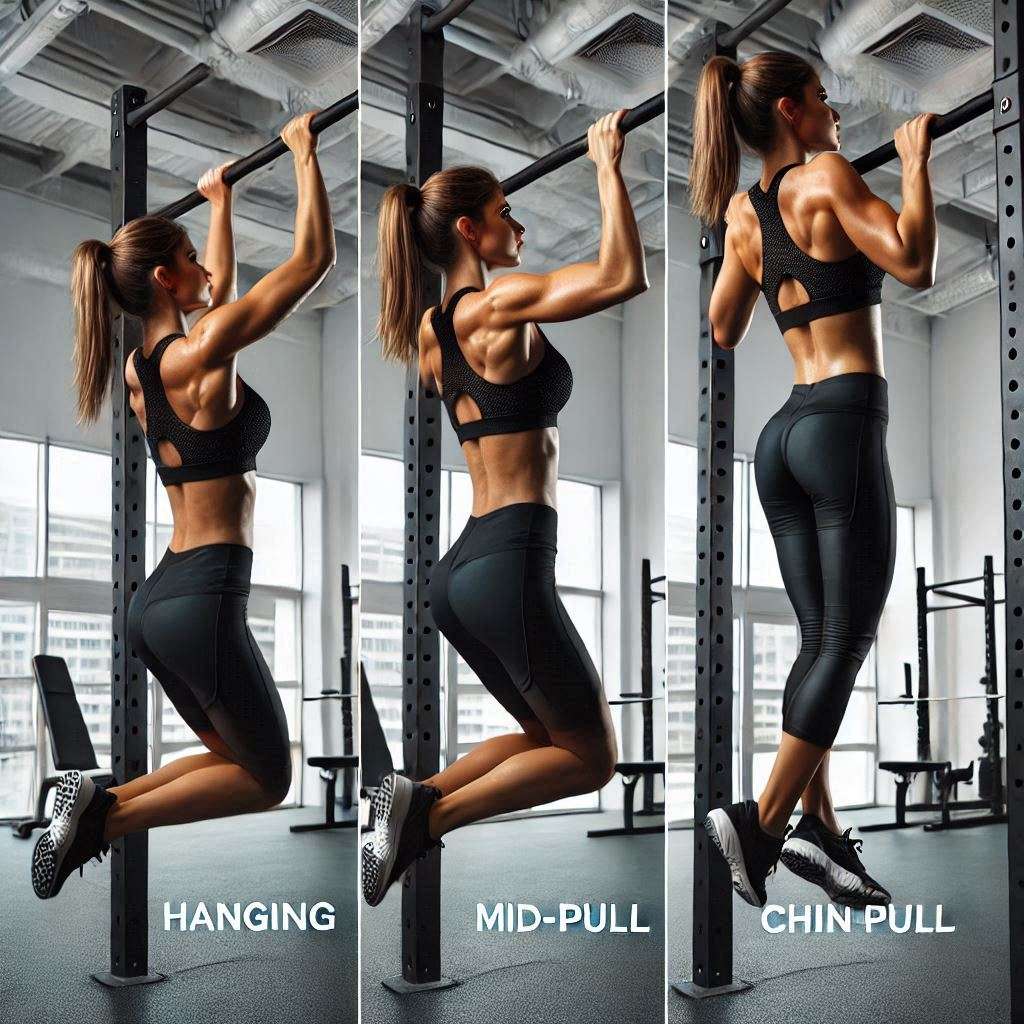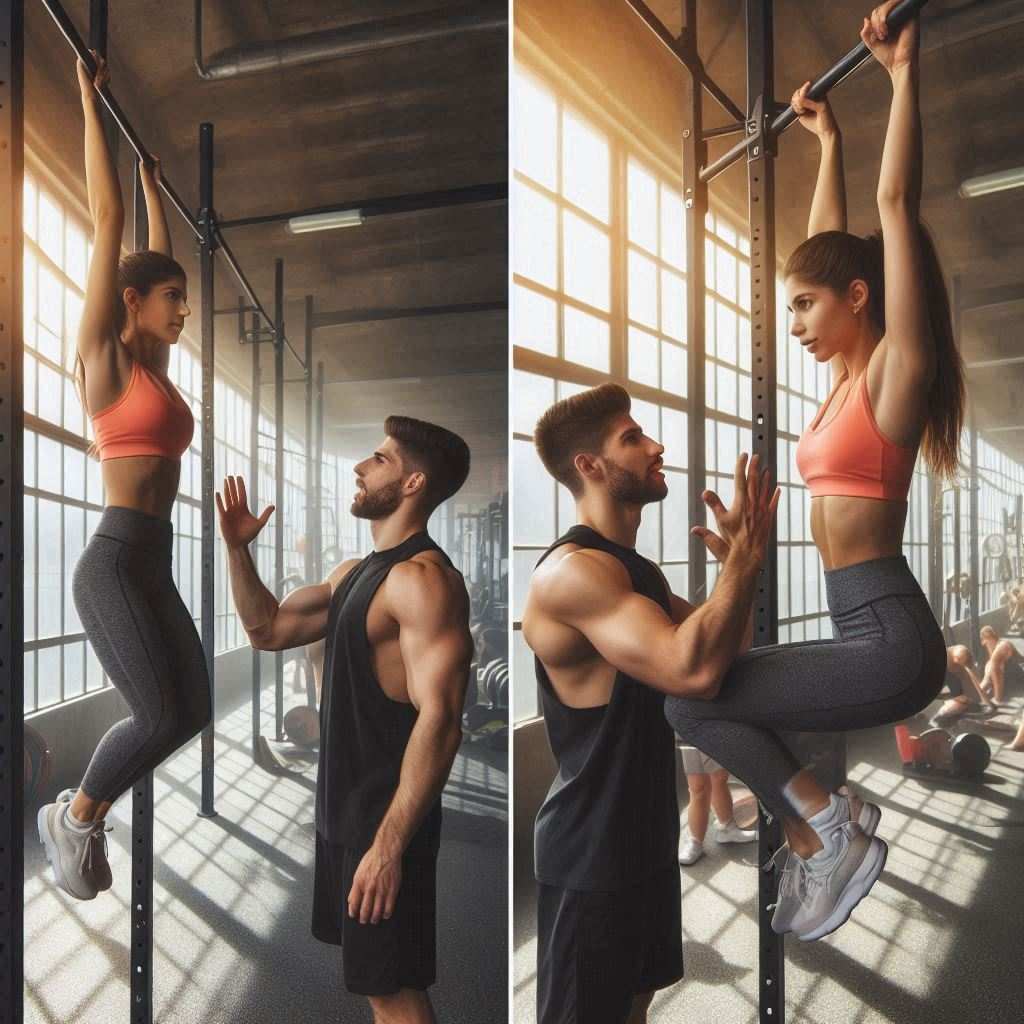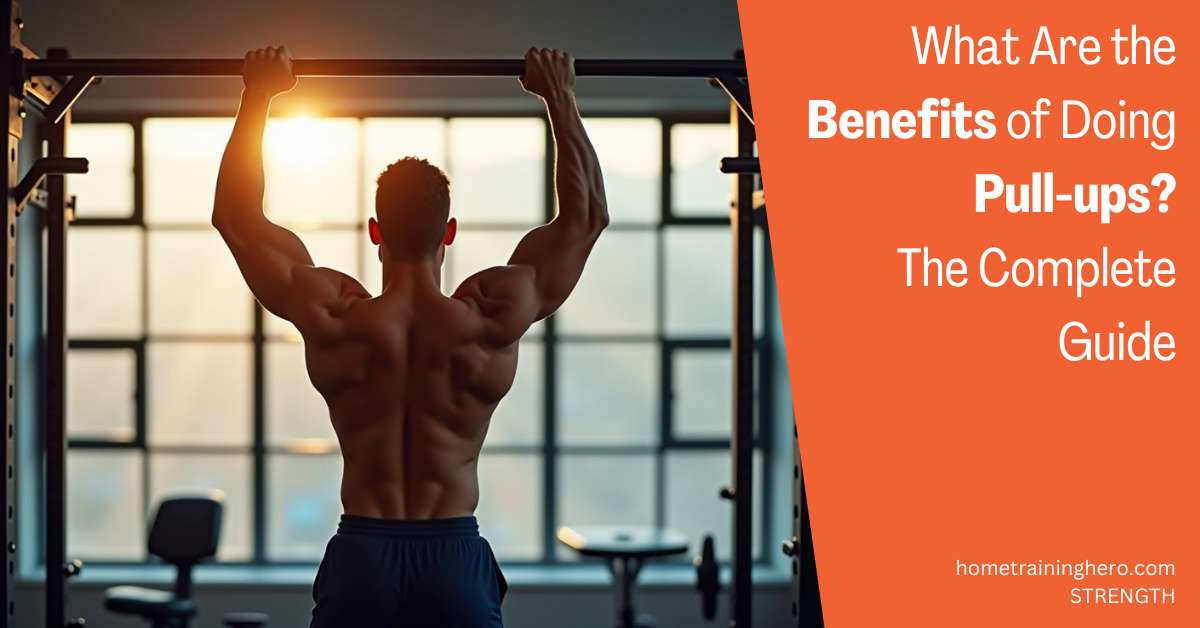Whether you’re a fitness enthusiast or just starting your workout journey, pull-ups stand as one of the most powerful exercises you can add to your routine.
This comprehensive guide will explore why pull-ups deserve a prime spot in your workout regimen and how they can transform your fitness level.
Now, let’s take a deep dive and learn what are the benefits of doing pull-ups.
Contents
Understanding the Pull-up: More Than Just Pulling Yourself Up

Before diving into the benefits, let’s clarify what makes a proper pull-up. A pull-up involves hanging from a bar with your palms facing away from you, then using your upper body strength to lift yourself until your chin passes the bar. While it sounds simple, this movement engages multiple muscle groups simultaneously, making it one of the most effective bodyweight exercises available.
The Science-Backed Benefits of Pull-ups
1. Complete Upper Body Development
Pull-ups target an impressive array of muscles:
- Latissimus Dorsi (Back): The primary muscle worked, creating that coveted V-taper
- Rhomboids and Trapezius: Essential for proper posture and shoulder blade movement
- Biceps and Forearms: Critical for arm strength and grip power
- Core Muscles: Engaged throughout the movement for stability
- Posterior Deltoids: Crucial for shoulder health and development
2. Functional Strength Enhancement
Unlike isolated machine exercises, pull-ups build real-world strength that transfers to daily activities. This functional fitness improvement helps with:
- Climbing activities
- Lifting and carrying objects
- Sports performance
- Overall upper body mobility
3. Improved Posture and Back Health
In our modern, desk-bound world, pull-ups offer a powerful antidote to poor posture. They:
- Strengthen the upper back muscles
- Counter the effects of prolonged sitting
- Reduce the risk of back pain
- Enhance spinal stability
4. Efficient Calorie Burning
Pull-ups are a compound exercise that:
- Burns more calories than isolated exercises
- Increases metabolic rate
- Contributes to fat loss goals
- Continues burning calories post-workout through the EPOC effect (Excess Post-exercise Oxygen Consumption)

Getting Started with Pull-ups

For Beginners
- Start with Assisted Pull-ups
- Use resistance bands for support
- Try negative pull-ups (jumping up and lowering slowly)
- Practice dead hangs to build grip strength
- Focus on Proper Form
- Keep your core engaged
- Maintain controlled movement
- Avoid swinging or kipping
Progressive Training Strategy
| Level | Exercise Type | Sets x Reps | Rest Time |
|---|---|---|---|
| Beginner | Assisted Pull-ups | 3 x 5-8 | 90 sec |
| Intermediate | Regular Pull-ups | 3 x 8-12 | 60 sec |
| Advanced | Weighted Pull-ups | 4 x 6-8 | 120 sec |
Common Mistakes to Avoid
- Poor Range of Motion: Not going all the way down or up
- Excessive Swinging: Using momentum instead of controlled strength
- Incorrect Grip Width: Hands placed too wide or too narrow
- Neglecting Scapular Control: Not engaging shoulder blades properly
Equipment Needed
The beauty of pull-ups lies in their simplicity. All you need is a sturdy pull-up bar. For home workouts, a quality door-mounted pull-up bar can transform any doorway into a complete upper body workout station. Check out our comprehensive guide to choosing the best door pull-up bar for your needs.
Tips for Success
- Practice consistently – aim for 2-3 pull-up sessions per week
- Start with negative pull-ups if you can’t do full ones yet
- Track your progress and celebrate small wins
- Maintain proper nutrition to support muscle recovery
- Combine pull-ups with complementary bodyweight exercises for balanced development
FAQs About Pull-up Benefits
Q: How many pull-ups should I be able to do? A: For beginners, aim for 1-3 proper form pull-ups. Intermediate fitness enthusiasts should target 8-12 reps, while advanced athletes might perform 15+ reps per set.
Q: Can pull-ups help with weight loss? A: Yes, as a compound exercise, pull-ups burn significant calories and build muscle, which increases your resting metabolic rate.
Q: How often should I do pull-ups? A: Start with 2-3 sessions per week, allowing at least 48 hours between sessions for proper recovery.
Time to Take Action
Ready to transform your upper body strength and overall fitness? Start your pull-up journey today. Whether you’re working towards your first pull-up or looking to add advanced variations to your routine, the key is to begin with proper form and consistent practice. Invest in a quality door pull-up bar and take the first step toward mastering this fundamental exercise.
Remember, every fitness journey starts with a single rep. What’s stopping you from starting yours today?


